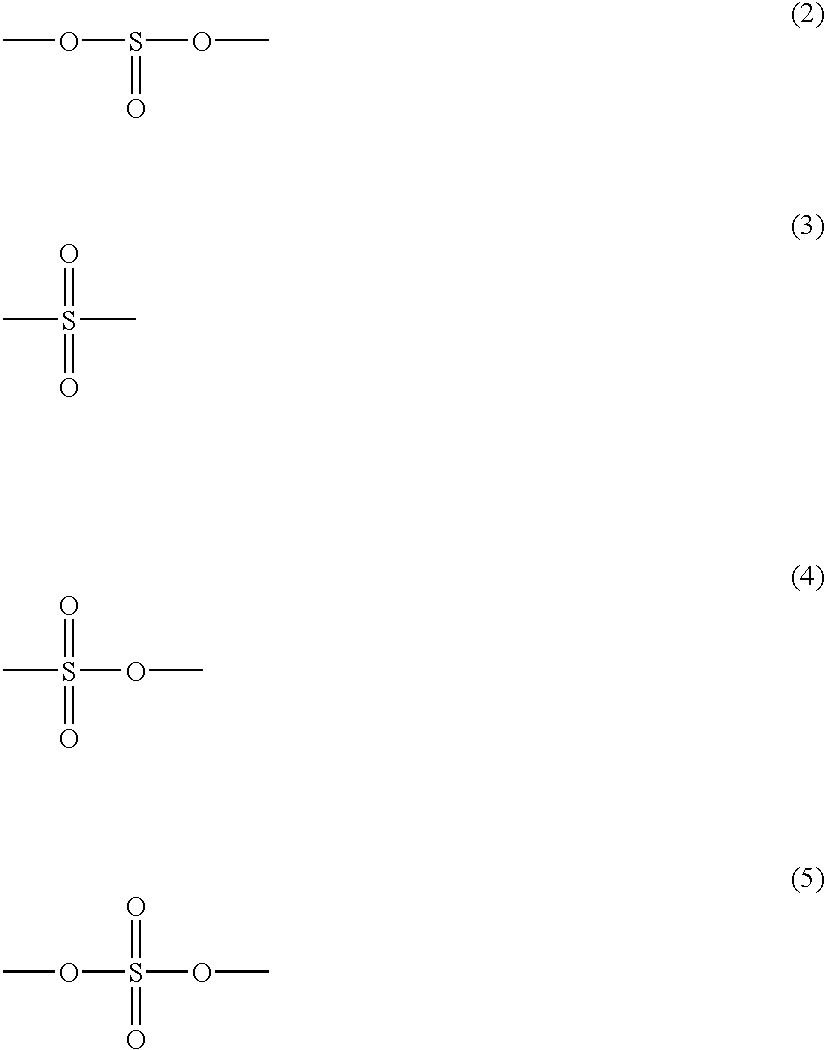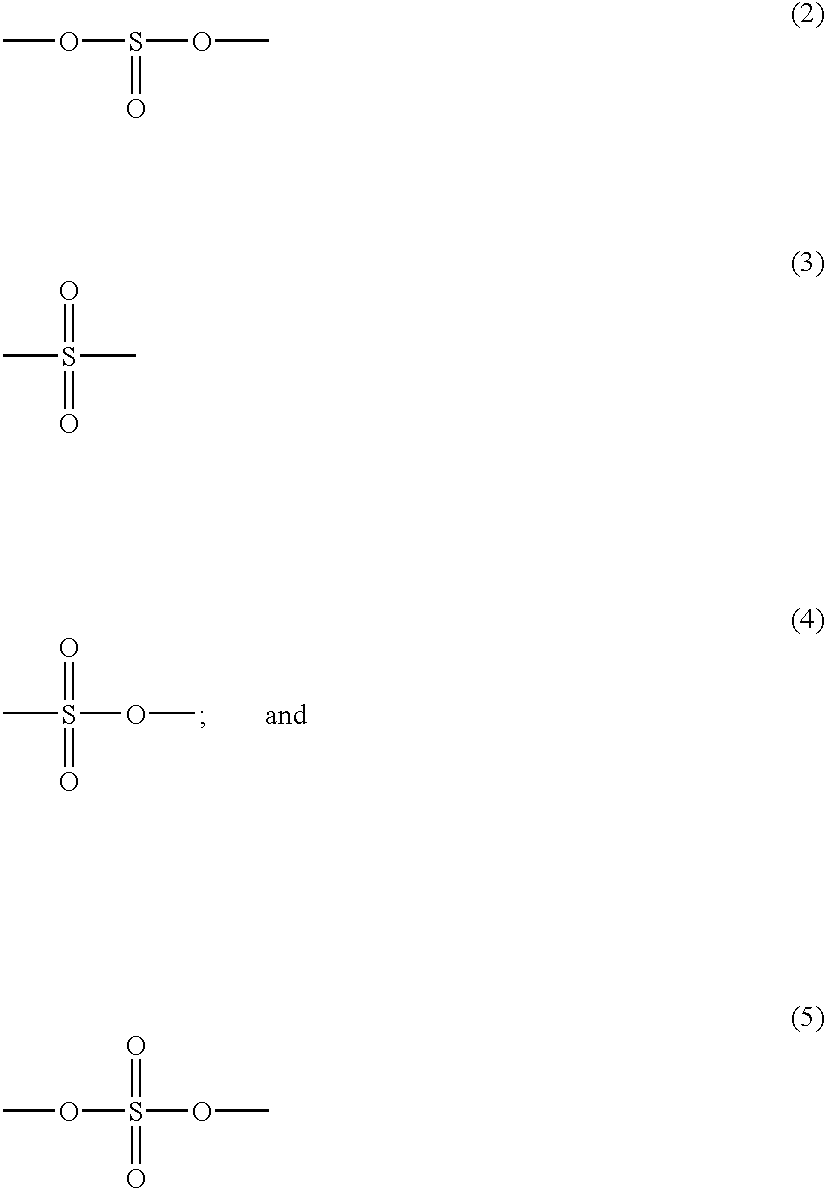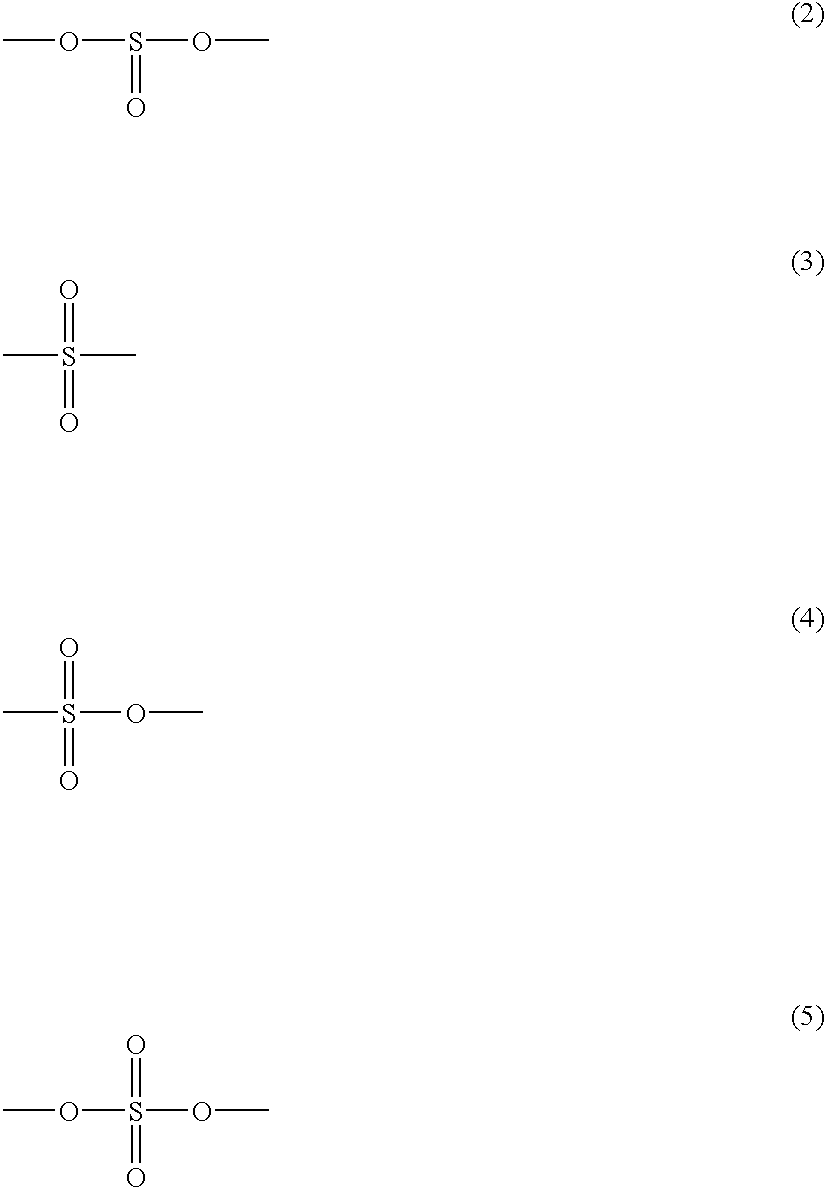Non-aqueous electrolyte cell with a solvent including a S-O bond
a technology of non-aqueous electrolyte and solvent, which is applied in the direction of non-aqueous electrolyte cells, cell components, secondary cells servicing/maintenance, etc., can solve the problems of degrading the discharging characteristics, and affecting the stability of the electroly
- Summary
- Abstract
- Description
- Claims
- Application Information
AI Technical Summary
Benefits of technology
Problems solved by technology
Method used
Image
Examples
examples 1 to 13
LiCoO.sub.2 (90 weight parts) as a positive electrode material was added with carbon black (6 weight parts) and polyfluorovinylidene (4 weight parts), and then dispersed with N-methyl-2-pyrrolidone to obtain a slurry. The slurry was uniformly coated on an aluminum foil of 20 .mu.m thick, as a current collector for the positive electrode, dried, and the foil was punched into a predetermined shape to obtain a positive electrode.
On the other hand, artificial graphite powder (product of Timcal America Inc., product name: KS-44) (90 weight parts) as a negative electrode material was mixed with polyfluorovinylidene (10 weight parts), and then dispersed with N-methyl-2-pyrrolidone to obtain a slurry. The slurry was uniformly coated on a copper foil of 18 .mu.m thick, as a current collector for the negative electrode, dried, and the foil was punched into a predetermined shape to obtain a negative electrode. The artificial graphite powder used above has a "d" value for lattice plane (002) in...
examples 14 to 16
LiCoO.sub.2 (85 weight parts) as a positive electrode material was added with carbon black (6 weight parts) and polyfluorovinylidene (9 weight parts), and then dispersed with N-methyl-2-pyrrolidone to obtain a slurry. The slurry was uniformly coated on an aluminum foil of 20 .mu.m thick, as a current collector for the positive electrode, dried, and the foil was punched into a predetermined shape to obtain a positive electrode.
On the other hand, artificial graphite powder (product of Timcal America Inc., product name: KS-44) (94 weight parts) as a negative electrode material was mixed with polyfluorovinylidene (6 weight parts), and then dispersed with N-methyl-2-pyrrolidone to obtain a slurry. The slurry was uniformly coated on a copper foil of 18 .mu.m thick, as a current collector for the negative electrode, dried, and the foil was punched into a predetermined shape to obtain a negative electrode.
The electrolytic solution was prepared by using or mixing ethylene sulfite (ES), propy...
example 17
LiCoO.sub.2 (85 weight parts) as a positive electrode material was added with carbon black (6 weight parts) and polyfluorovinylidene (9 weight parts), and then dispersed with N-methyl-2-pyrrolidone to obtain a slurry. The slurry was uniformly coated on an aluminum foil of 20 .mu.m thick, as a current collector for the positive electrode, dried, and the foil was punched into a predetermined shape to obtain a positive electrode.
On the other hand, artificial graphite powder (product of Timcal America Inc., product name: KS-44) (94 weight parts) as a negative electrode material was mixed with polyfluorovinylidene (6 weight parts), and then dispersed with N-methyl-2-pyrrolidone to obtain a slurry. The slurry was uniformly coated on a copper foil of 18 .mu.m thick, as a current collector for the negative electrode, dried, and the foil was punched into a predetermined shape to obtain a negative electrode.
The electrolytic solution was prepared by mixing ethylene sulfite (ES) and propylene c...
PUM
| Property | Measurement | Unit |
|---|---|---|
| solidification point | aaaaa | aaaaa |
| vol % | aaaaa | aaaaa |
| molar concentration | aaaaa | aaaaa |
Abstract
Description
Claims
Application Information
 Login to View More
Login to View More - R&D
- Intellectual Property
- Life Sciences
- Materials
- Tech Scout
- Unparalleled Data Quality
- Higher Quality Content
- 60% Fewer Hallucinations
Browse by: Latest US Patents, China's latest patents, Technical Efficacy Thesaurus, Application Domain, Technology Topic, Popular Technical Reports.
© 2025 PatSnap. All rights reserved.Legal|Privacy policy|Modern Slavery Act Transparency Statement|Sitemap|About US| Contact US: help@patsnap.com



